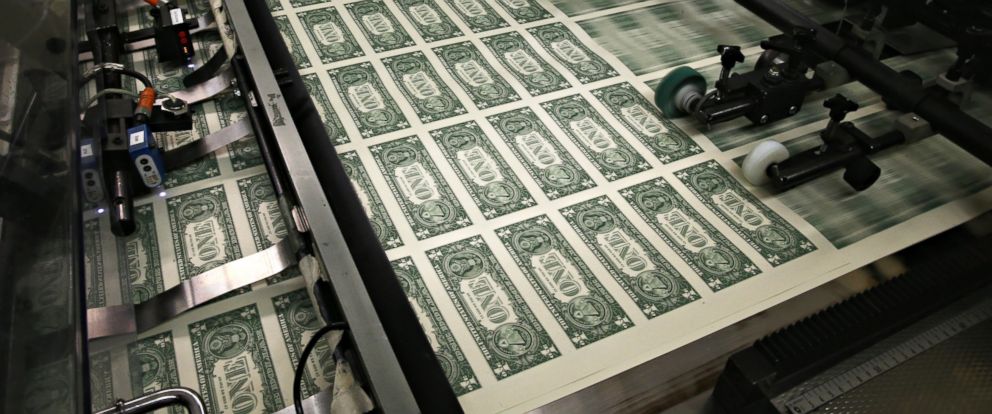The US government can’t default because it can just print the money. I was skimming through a Bloomberg article when I found reference to this old conventional foolishness.
“It’s true that American companies aren’t the biggest borrowers in the low-rates era that began in 2008. That would be the federal government. But the government controls the dollar printing press, so it can’t really go bust. Plus, there hasn’t been a sovereign debt default in a rich country for decades.” – Bloomberg article
Source: https://www.bloomberg.com/news/articles/2019-08-08/companies-use-borrowed-billions-to-buy-back-stock-not-to-invest
Who Doesn’t Want to be a Trillionaire?
If the dollar printing press was so powerful, why not print $20 million dollars for each person in the US, or the world even? Why not $20 billion or $99 trillion or umpteen gazillion?
That would end poverty in the US and the world and make everyone rich!
Most people intuitively understand that this wouldn’t work.
“That’s different,” they might retort.
True. The government monetizing $20+ trillion in debt or more is different than printing millions of trillions and giving it to the people.
But the only difference between the government bailing itself out with the printing press (as it has been doing) versus making everyone a trillionaire is a difference of degree, not kind.
It is a reductio ad absurdum argument that shows, in an extreme case most people will agree with, how simply printing money won’t make everyone rich.
It doesn’t magically work any differently just because the government prints money to pay off the debt.
Counterfeiting is illegal because the Government will not suffer competition.
It’s also a reason why Universal Basic Income doesn’t work, simply creating more money will only cause prices to rise to a new equilibrium level, or shortages will occur.
A Printing Press Does Not Reduce Scarcity
There is inherent scarcity in the world. There is only so much food, energy, raw materials available on earth at any given moment in time.
Through technology and capital investment goods and services can be provided more efficiently and in greater quantity for a given amount of effort, but this only lessens scarcity, it doesn’t eliminate it.
In a more concrete example, there were only 36 1962 Ferrari 250 GTOs built. It doesn’t matter if everyone on the planet has $20 billion, $30 trillion or umpteen gazillion dollars, not everyone is going to be able to have one of these 36 Ferrari’s.

If the Fed printed up $1 trillion for everyone, and the demand for 1962 Ferrari 250 GTOs remained the same, the price of these Italian sports cars would adjust upwards over $1 trillion and the cars would still be as unaffordable for most people as they were before they became “rich.”
A printing press (or the digital equivalent) which allows the United States Federal Reserve to increase the balances of banks. It can’t create more food, energy, 1962 Ferrari’s, phones, or any additional goods or services of any kind.
Only True in a very Technical Sense
If the US government wanted to pay off the debt, they could do so with a few computer keystrokes. This is what people mean when they say the US government can’t really default.
It is true in a limited, technical sense.
But it fails to take into account what would happen if they did so. Namely that the dollar would lose a great deal of it’s value and everything would become more expensive.
This already happens and with the principles of supply and demand explains why rent, food, gasoline, and many other goods and services become more expensive each year.
If you own a government bond and the government can’t pay it all back via taxes consider two hypothetical scenarios:
- Government defaults, and only pays back say half of what they borrowed, purchasing power of the dollar is preserved
- Government de facto defaults, pays back all the debt with printed money, reducing the purchasing power of the dollars by half
In scenario 2 the government hasn’t technically defaulted, they paid back what was owed, but it has de facto defaulted as the lender is just as bad off as if the government had defaulted.
In both scenarios the lender only has half the purchasing power. Ultimately purchasing power is what matters when it comes to money.
“I’m out of it for a little while, everybody gets delusions of grandeur.” – Han Solo
So the next time you read or hear someone say that the US government can just pay back the debt by printing the money, remind them of the dramatic price inflation that would be unleashed upon everything priced in dollars.

